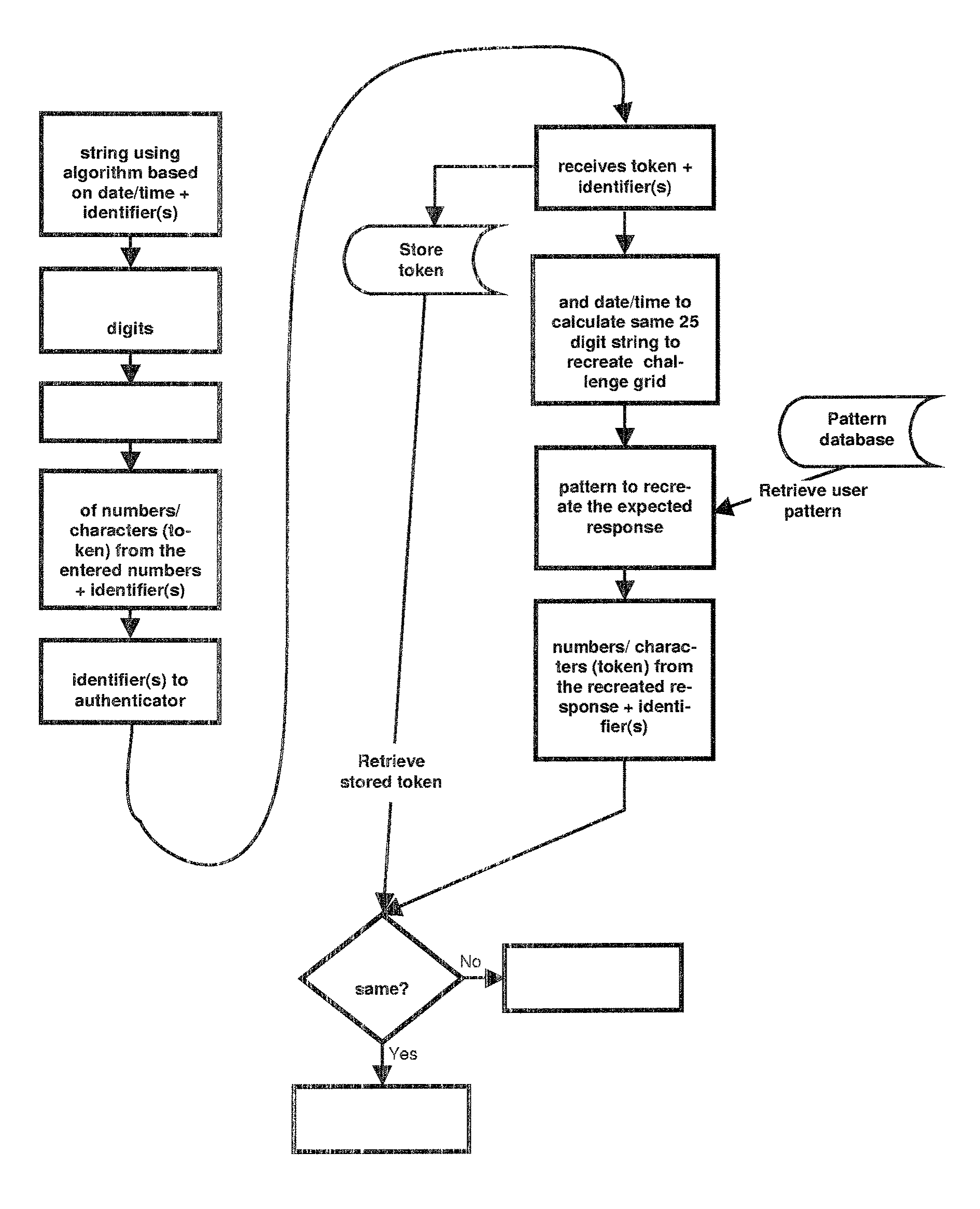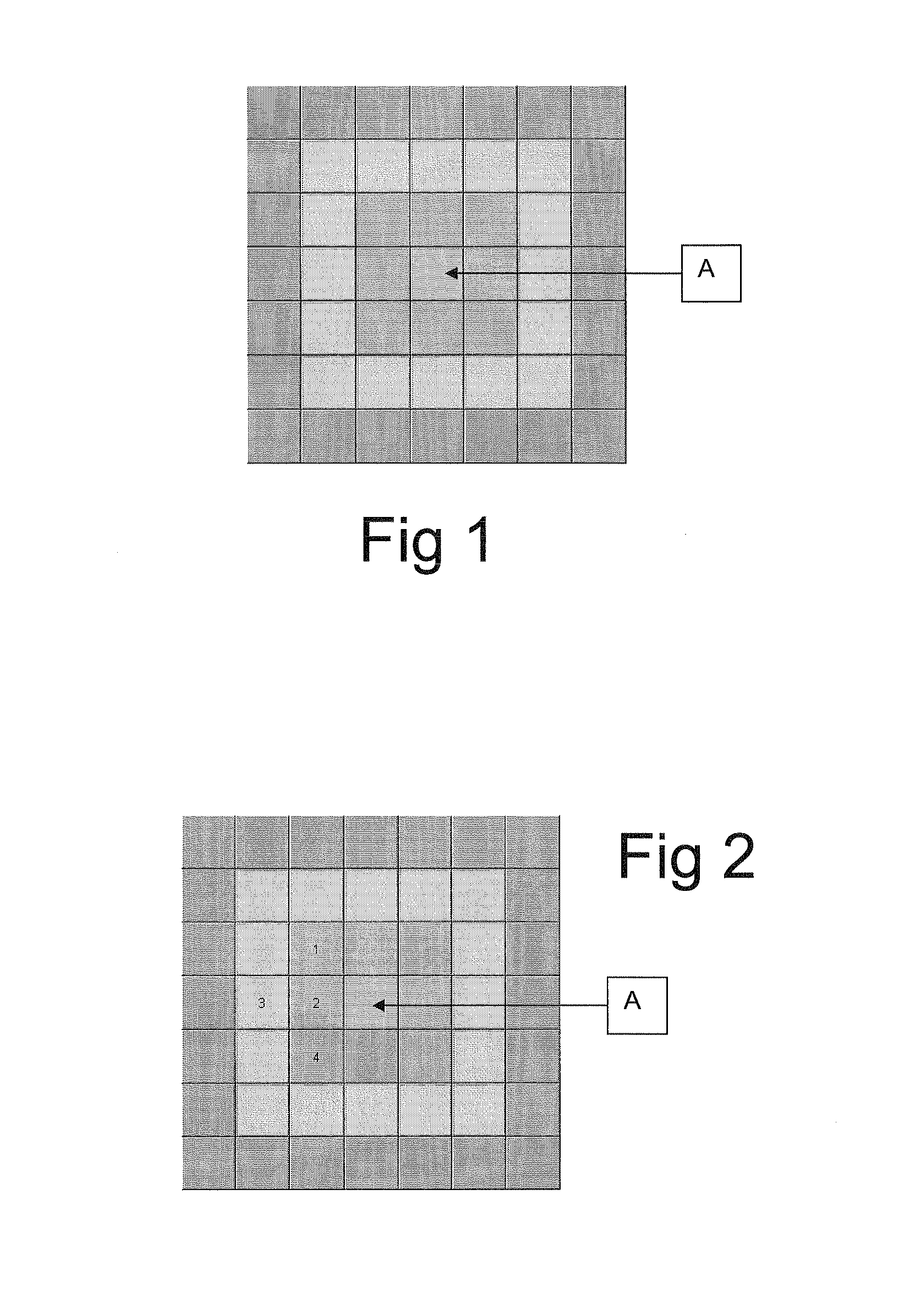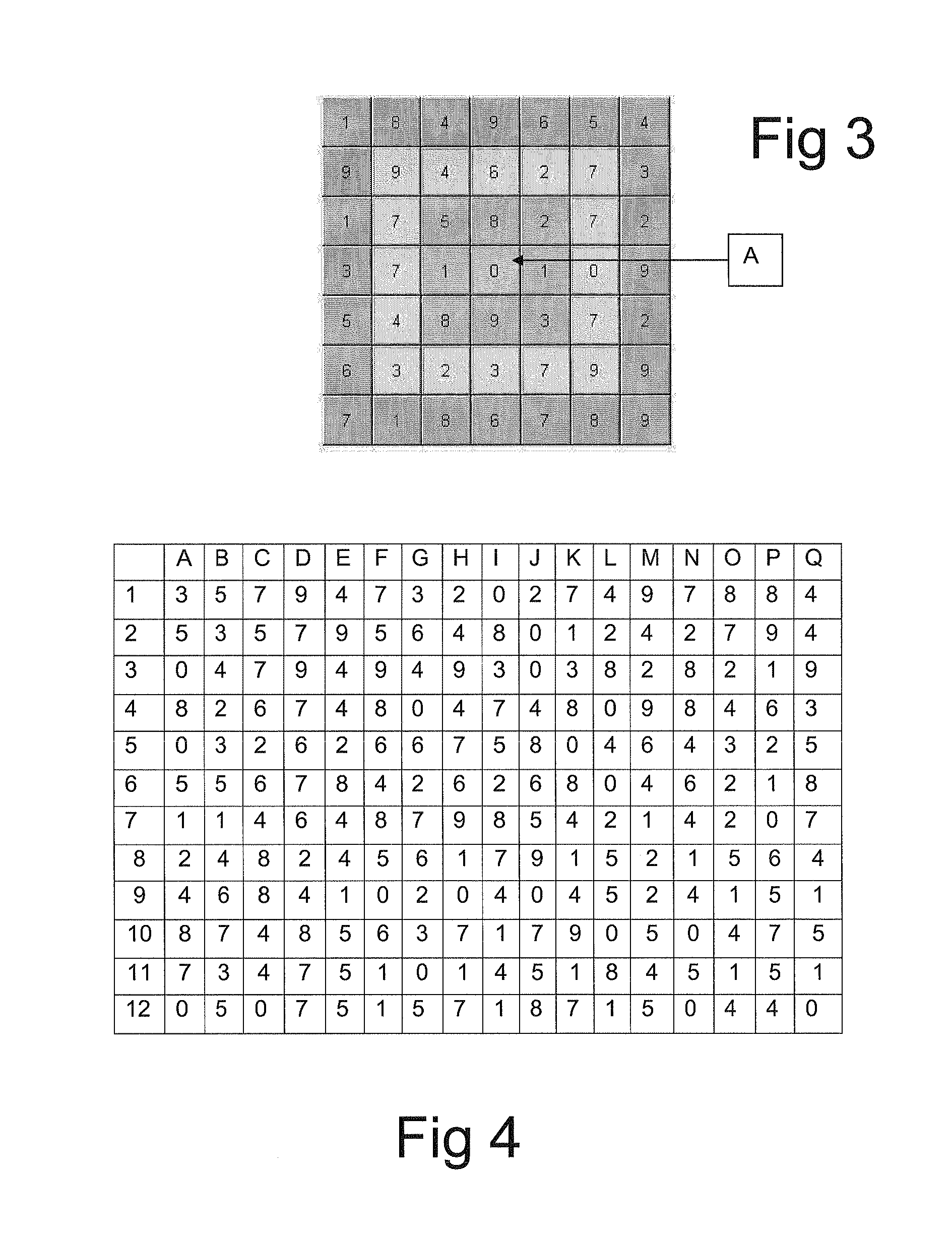Method and apparatus for verifying a person's identity or entitlement using one-time transaction codes
a one-time transaction and verification method technology, applied in the direction of program control, instruments, testing/monitoring control systems, etc., can solve the problems of inherently insecure sending credit card information and pins to an untrusted second party, the problem of credit card fraud is a major problem for retailers and credit card companies alike, and the inability to address the problem, so as to reduce the risk of this being intercepted and misused by a third party, and increase the security of communication. ,
- Summary
- Abstract
- Description
- Claims
- Application Information
AI Technical Summary
Benefits of technology
Problems solved by technology
Method used
Image
Examples
Embodiment Construction
[0094]As an aid to understanding the following description, we use the following terms:
[0095]‘Grid’—A tabulated set of symbols, such as numbers or letters or a combination of both. This grid may be (but need not necessarily be) represented on a ‘Craymer Grid’ forming the subject of our above referenced co-pending patent application.
[0096]‘Pattern’—A choice of grid positions which make up a ‘pattern’ which is only known by the user of the grid and the authenticator (see below). A pattern is not necessarily a naturally recognisable shape such as a straight line, square or triangle. Indeed, it is preferable for it not to be a regular shape.
[0097]‘Sequence’—The order in which the grid positions in a ‘pattern’ are selected.
[0098]‘Authenticator’—A person or organisation who wishes to check someone's identity or entitlement.
[0099]‘User’—A person or organisation that is using the system and needs to validate his / its own identity or credentials.
OPERATION OF THE METHOD
[0100]The method in acco...
PUM
 Login to View More
Login to View More Abstract
Description
Claims
Application Information
 Login to View More
Login to View More - R&D
- Intellectual Property
- Life Sciences
- Materials
- Tech Scout
- Unparalleled Data Quality
- Higher Quality Content
- 60% Fewer Hallucinations
Browse by: Latest US Patents, China's latest patents, Technical Efficacy Thesaurus, Application Domain, Technology Topic, Popular Technical Reports.
© 2025 PatSnap. All rights reserved.Legal|Privacy policy|Modern Slavery Act Transparency Statement|Sitemap|About US| Contact US: help@patsnap.com



